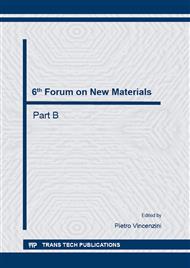p.75
p.85
p.93
p.97
p.103
p.111
p.115
p.121
p.131
Progress at ANSTO on a Synroc Plant for Intermediate-Level Waste from Reactor Production of 99Mo
Abstract:
Intermediate level waste from ANSTO’s expanded 99Mo production plant will consist of ~5000L/year of 6M NaOH + 1.4 NaAlO2 + fission products. Detailed engineering is being carried out on a synroc plant to immobilise this waste in a glass-ceramic, with completion scheduled for 2016. The liquid waste will be mixed with precursors and dried before being calcined in a reducing atmosphere to control fission product volatility. The calcine will be transferred to 30L metal cans which will be hot isostatically pressed at 1000°C/30MPa for 2h, then cooled to room temperature and stored preparatory to final disposal. Laboratory scale waste form material will pass 90°C PCT tests. In addition, legacy intermediate level uranyl nitrate-based liquid waste from 99Mo production at ANSTO between the 1980s and 2005 via irradiation of UO2 targets will also be immobilised by the same process to form a Synroc-type waste form. Some examples illustrating the wide applicability of hot isostatic pressing to consolidate nuclear waste forms will be given showing the advantages for particular wastes, notably high waste loadings and the absence of off-gas in the high temperature consolidation step. The immobilisation of a variety of low-level liquid and solid wastes from 99Mo production will also be discussed.
Info:
Periodical:
Pages:
111-114
Citation:
Online since:
October 2014
Authors:
Price:
Сopyright:
© 2014 Trans Tech Publications Ltd. All Rights Reserved
Share:
Citation:


